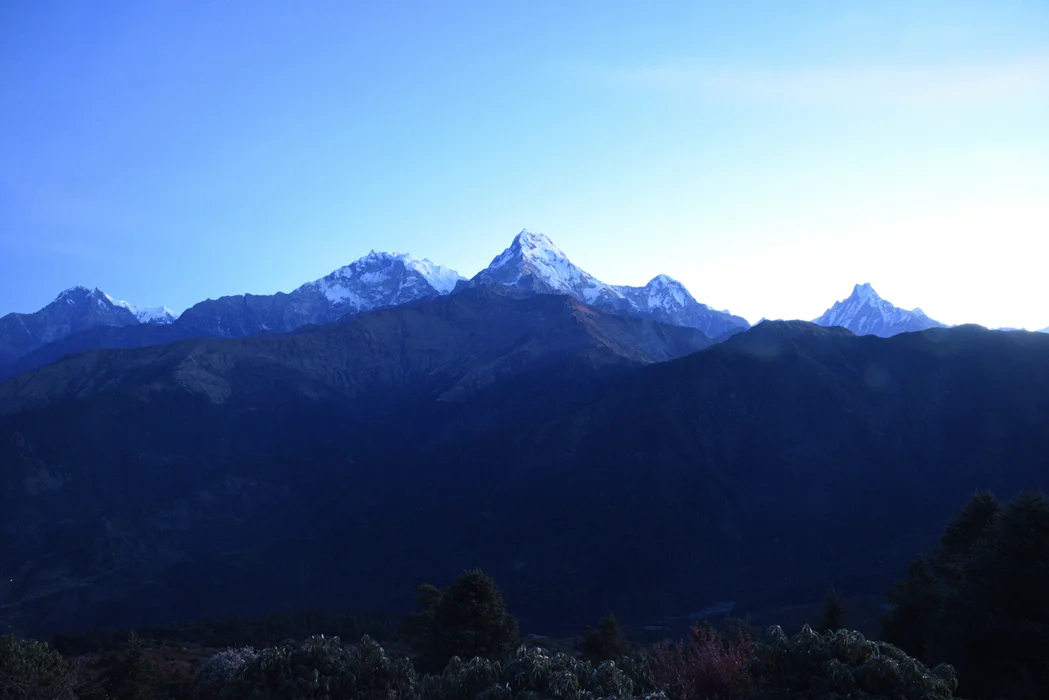Aasma Aryal
Nepal is a land of the exalted Himalayas and a home of the greatest mountain chain in the world. More than 250 peaks are found to be congregated in our beloved country and it is a unique cluster of giant and dazzling summits. There are approximately 800 km of the Himalayas in Nepal amongst which eight of the world's fourteen highest peaks fall under it. Nepal is considered to be the major highlight of mountain tourism(trekking in Nepal) as the spectacular mountain range overlooks the deep valleys with rambling pastures and the swarming Sherpa villages.
The western edge of the Himalayas prolongs up to the Indus River and the Nanga Parvat. It is considered to be the highest mountain in the western side of the Himalayas and is the 9th highest in the world. Whereas, the north-western section of the Himalayas are known as Karakoram and the Hindu Kush. In total both of these ranges cover more than 1300 kilometres.
The Himalayas have one of the largest ice accumulations in the world after the Polar Regions. The Himalayas have about 1500 glaciers and they hold up to 3000 cubic miles of fresh water and it is considered to be the source of one of the biggest tributaries in the world. Some of the major tributaries with starting points to reach the glacier deposits are: Jhelum, Ravi, Sutlej, Brahmaputra, Ganges, Yamuna, Beas, Yarlung Tsangpo, Ayerwadi, Indus, Salween, Mekong, Chenav, Ravi, Yangtze and Huang He.
The mountains of our country have proved to be major sources of many rivers along with the glaciers which play an important role in the country's economy. About 9% of our total land is covered by Himalayas and there are many climbable peaks in that region. However, some of the peaks are left unclimbed and it is held sacred by the local ethnic group.
The giants are sacred to the religions of Bon, Jain, Buddhism and Hinduism. From historical point of view, Nepal is known as the home of the Himvat which is considered to be the father of Ganga and Parvati. Similarly, Kailash in the Tibet is known as the home of the Buddhist messengers, Hindu gods along with the root of Jain and Bon religion.
Nepal has the highest Himalayan ranges of the world and it wraps and protects the Himalayan lifestyle and culture. Various expedition programs are arranged for adventurous trekkers who come to prove their might by stepping on the giant peaks of the world. Some trekkers might want to venture simple trekking routes whereas daring trekkers can venture virgin lands with the help of skillful guides.
Everest is the place for outdoor enthusiasts and thrill seekers. The giant of the giants lies in between the border between Nepal and Tibet and remains to be sacred for people of both places. It has proudly stood throughout history as the highest peak of the world.
Everest Base Camp trek is one of the popular multi-day trekking destination in Nepal
Kanchenjunga is the third largest mountain in the world and lies on the east of Great Himalayan Trails. The locals consider this summit as sacred. Kanchenjunga literally means "five treasures of snow" as it consists of five separate peaks.
Lhotse is the fourth tallest mountain of the world. Besides this main summit there are Lhotse Middle (8,414 m) and Lhotse Shar (8383 m). Lhotse is connected to Mount Everest via the South Col and the name signifies "South Peak" in Tibetan. As it is joined by a ridge to Everest, many climbers venture upon both the mountains.
Machhapuchhre (fishtail mountain) is the most iconic and well known mountain of the Himalayan horizon. Visitors can admire this giant from the city of lakes, Pokhara which is only 25 km away. This mountain is considered holy and apparently no one till record has climbed it to the summit.

